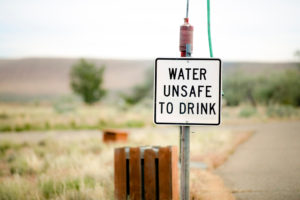
On August 10, 2022, President Joe Biden signed into law the Sergeant First Class Heath Robinson Honoring our Promise to Address Comprehensive Toxics Act, better known as the PACT Act. By deeming toxic exposure in the military, “a cost of war,’’ the far-reaching legislation found in the PACT Act gives injured military personnel, including burn pit victims, expanded medical benefits. It also includes a measure that allows thousands of individuals exposed to the contaminated water supply at Camp Lejeune the ability to file lawsuits against the U.S. government.
The contaminated Camp Lejeune water supply went undetected from 1953 to 1987, leaving generations of individuals who lived and worked at Camp Lejeune without adequate government support for illnesses associated with the toxic water. Known as the Camp Lejeune Justice Act (CLJA), the measure has opened a two-year legal window for water contamination victims to file Camp Lejeune claims with the office of the Judge Advocate General (JAG) of the Navy’s Tort Claims Unit (TCU) in Norfolk, VA. After a Camp Lejeune claim is filed, the JAG will either accept or reject the claim. If the claim is denied, a Camp Lejeune lawsuit can be filed to recover damages for losses such as pain and suffering, illness, mental anguish and lost earnings.
Who Can File a Camp Lejeune Lawsuit?
Claimants can be any individual who lived or worked at Camp Lejeune for at least 30 days from August 1, 1953, to December 31, 1987, and have suffered from one of several serious conditions or illnesses associated with the toxic water.
The illnesses associated with the Camp Lejeune water contamination include bladder cancer, breast cancer, esophageal cancer, infertility, hepatic steatosis, leukemia, lung cancer, miscarriage, birth defects, multiple myelodysplastic syndromes, neurobehavioral effects, non-Hodgkin’s lymphoma, renal toxicity, scleroderma and Parkinson’s disease.
Although an exact number is unknown, it is estimated that one million people were exposed to the water contamination at Camp Lejeune. Now that the Camp Lejeune Justice Act legislation has been signed into law, thousands of victims, both military and civilians, can seek restitution over injuries sustained at the Jacksonville, North Carolina Marine Corps Base.
How the Camp Lejeune Water Contamination Happened
For about 30 years, residents and workers at Camp Lejeune used tap water for drinking, bathing, cleaning and cooking, unaware that the water was contaminated with toxic substances.
According to the Agency for Toxic Substances and Disease Registry (ATSDR), trichloroethylene, tetrachloroethylene, vinyl chloride and benzene, which are all known volatile organic compounds (VOCs), began infiltrating the water in August 1953. That was when a dry cleaner next to the Tarawa Terrace water treatment plant at Camp Lejeune started disposing of the hazardous waste directly into the ground. Soon after, the Camp Lejeune Hadnot Point water treatment’s plant water supply was contaminated due to leaky underground storage areas and spills.
Unfortunately, the two water plants were not shut down until 1987. According to some estimates, 500,000 people may have contracted major and often catastrophic illnesses from the contaminated water at Camp Lejeune.
Until now, it has been challenging for individuals to file a federal lawsuit over the Camp Lejeune water contamination largely because of an obscure North Carolina law calling for a ten-year statute of repose for claimants to file lawsuits. Unlike a statute of limitations, a statute of repose starts when the negligent party begins the misconduct. However, the Camp Lejeune water was not identified as contaminated until years after the damage was done. Along with that, the types of illnesses caused by the contamination, in many cases, did not appear until years after the toxic water exposure.
The Camp Lejeune Justice Act steps over that law and gives water contamination victims the chance to receive the long-awaited and necessary support from the government.
Filing a Camp Lejeune Lawsuit
The clock is ticking to file a Camp Lejeune claim. The Camp Lejeune Justice Act allows a two-year window for military personnel, civilians, or their legal representatives to file Camp Lejeune claims. Claims can be filed on behalf of those who lived or worked at Camp Lejeune for at least 30 days from August 1, 1953, to December 31, 1987, and were harmed by the toxic water. The Camp Lejeune claims process must occur before individuals can file a lawsuit.
If you or someone you know has suffered an illness or passed away from a disease due to the Camp Lejeune water contamination, you should contact a lawyer familiar with the new Camp Lejeune legislation. If you have an illness other than the ones mentioned above or are unsure if you would qualify for compensation, an attorney can walk you through the Camp Lejeune legal process. The attorneys at Herman, Katz, Gisleson & Cain have the experience necessary to represent victims of water contamination. Contact us online or call 1-844-943-7626 for a free consultation today.

Jed Cain is a partner with Herman, Herman & Katz, LLC. He has dedicated his career to representing injured folks and their families.














Comments for this article are closed.